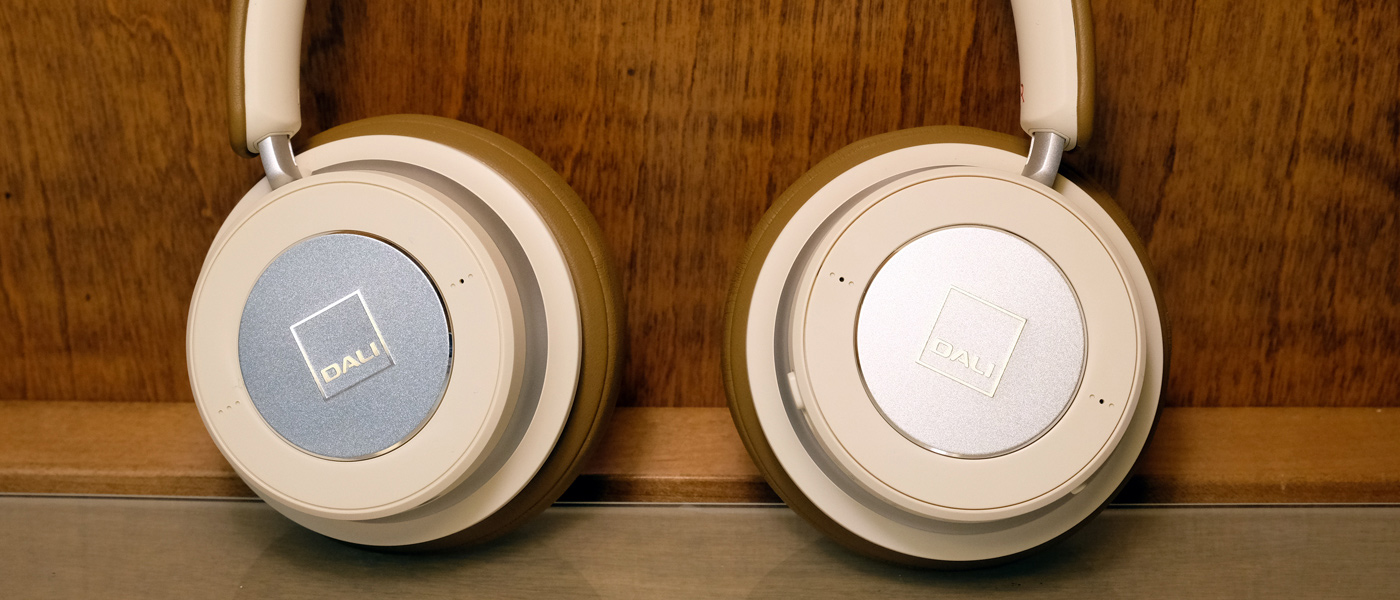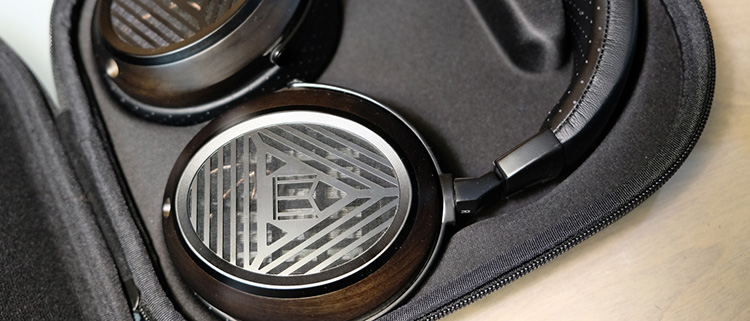
Monoprice Monolith M570 Planar Headphone
- Great build quality for the price.
- A little on the heavier side but otherwise very comfortable to wear.
- Spacious, open back sound quality.
- Solid level of bass, lively mids, and smooth highs.
- Can work with a phone but sounds much better with a dedicated amp.
Some scrimping and saving from my part-time job allowed me to buy a pair of Sony MDR-CD7 headphones which were a vast improvement over anything I had put on my head up to that point. A few years later saw the addition of Sony’s MDR-CD777 to my collection (it seems I had a thing for Sony and sevens). I’m sure there is a college yearbook photo of me floating around somewhere with these headphones strapped to my melon while I was drawing.
Secrets Sponsor
Fast forward to today, I still love cans and have more than a few sets of headphones hanging in my studio, patiently waiting to be used. Each has its own unique qualities that endear them to me for particular use cases. And while a couple in my collection may be at the higher end of the price spectrum, most fall into the much more affordably priced category. The joy of finding that piece of gear that not only sounds really good but provides significant value is not lost on me. Monoprice has had headphones marketed under their Monolith line for a little while now and at CEDIA 2019 they previewed three new planar headphones that were scheduled for release by year’s end. For this review, we have the most affordable model of the three, the Monoprice Monolith M570 Planar Headphone. Does Monoprice Monolith land another successful entry into the line’s enviable price-to-performance record? We shall see…
Design:
Open-back, Over-the-Ear Headphones with Planar Magnetic Drivers
Driver Size:
97.0 mm x 76.0 mm
Manufacturer Freq. Response:
5 Hz – 55 kHz
Sensitivity:
96 dB (2.83V @ 1m)
Weight:
14.8 ounces
Available Colors:
Black with Zebrawood Ear Cups
Accessories:
One detachable 5.9-foot headphone cable with 3.5mm plug, one 1/4” phono adapter, carrying case.
MSRP:
$299.00
Product Page:
Company Website:
Company:
SECRETS Tags:
monoprice, monolith, m570, planar, open-back, Headphone Review 2020
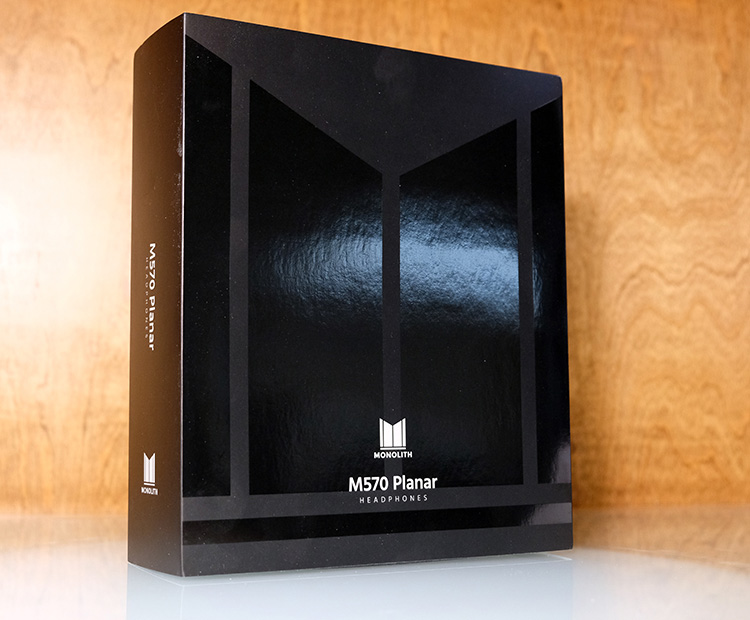
Monoprice M570 Box

Monoprice M570 – Box Interior
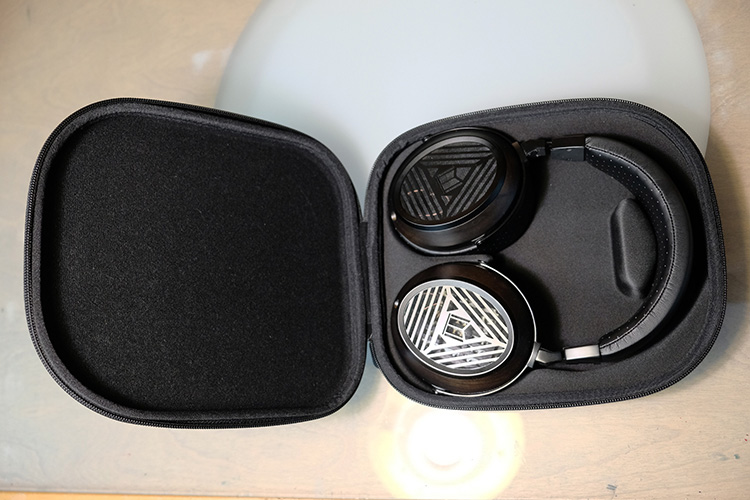
Monoprice M570 – Open Case
As an overall design, “delicate” is not the first word that comes to mind when you first pick up a pair of Monolith M570 headphones. Sturdy, solid and robust would be more accurate descriptors. They certainly feel well put together with the adjustment arms “clicking” with a reassuring firmness as you set them to the appropriate size. A large, well-padded and perforated headband is covered in soft synthetic leather that feels good on the head and prevents the headphones from sliding around too much. The earcups are made of zebrawood of which you would be hard-pressed to notice as the wood is stained in a shade of brown that is almost as dark as the surrounding black trim. Zebrawood can have a lovely grain pattern to it depending on the cut and it’s a bit of a shame that it is so obscured.
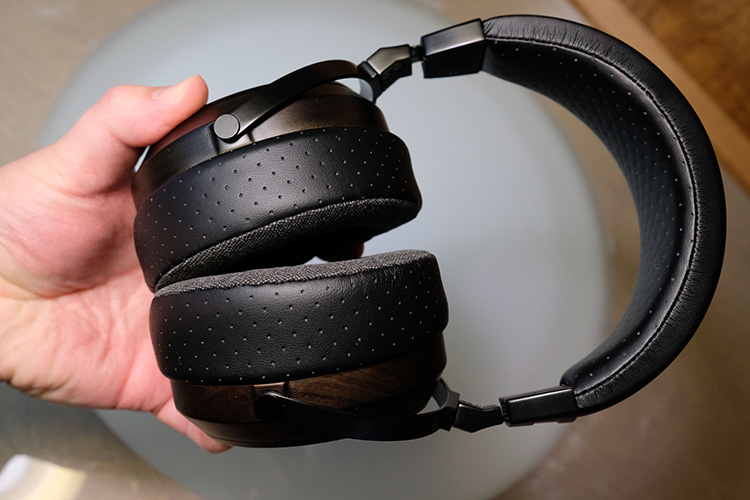
Monoprice M570 – In Hand
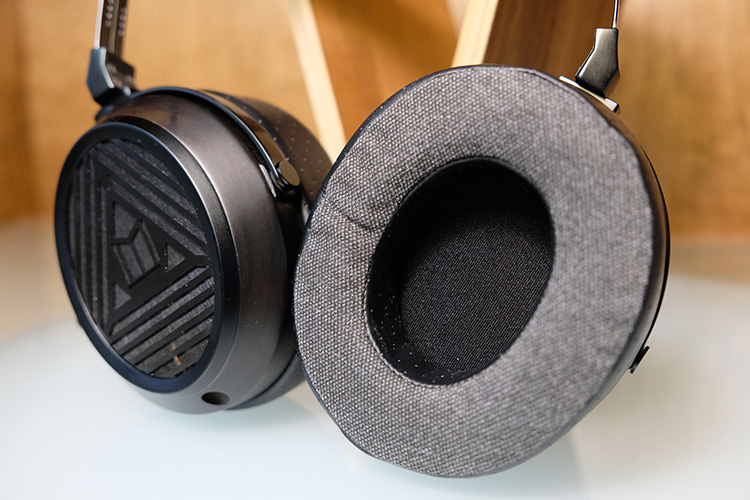
Monoprice M570 – Earpads
The earcups each house planar magnetic drivers measuring 97 mm x 76 mm using an asymmetrical double Neodymium magnet array. The included detachable and perforated earpads are covered in synthetic leather but are faced with soft cloth contact patches. The pads are big enough that they completely covered my ear lobes and felt exceedingly comfortable overall. The cord is a generous length and is detachable using a pair of 2.5mm jacks to securely plug into the earcups with the source end being a 3.5mm stereo plug. A screw-on ¼” phono plug adaptor is included along with a large semi-hard-shell case.
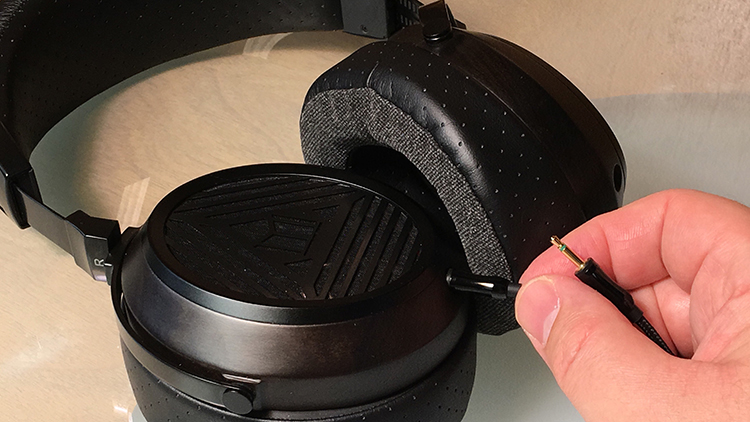
Monoprice M570 – Connecting Wires

Monoprice M570 – Wire Ends
From a comfort standpoint, I personally found them to be very comfortable to wear for extended periods. There is no getting around the fact that the M570 are a big set of cans and the 14.8-ounce weight is certainly noticeable but not objectionable. The headphones had a reasonable level of clamping force that was nicely distributed by the plush earpads.
Being an open-back design, the M570 lets in a good deal of outside sound when worn and if you wear them out on the morning commute, for example, people in close proximity will hear your playlist.
With a 32 Ohm impedance, the headphones can be driven by most portable devices. I found that I had to have the volume level at about ¾ of the way up on my iPhone 6S Plus to get a good listening level with these headphones.
I also would not necessarily call these headphones travel friendly as the aforementioned case is large and the headphones themselves do not fold up in any way. You certainly could pack them in a suitcase, but it would take up a good deal of real estate inside a carry-on bag.
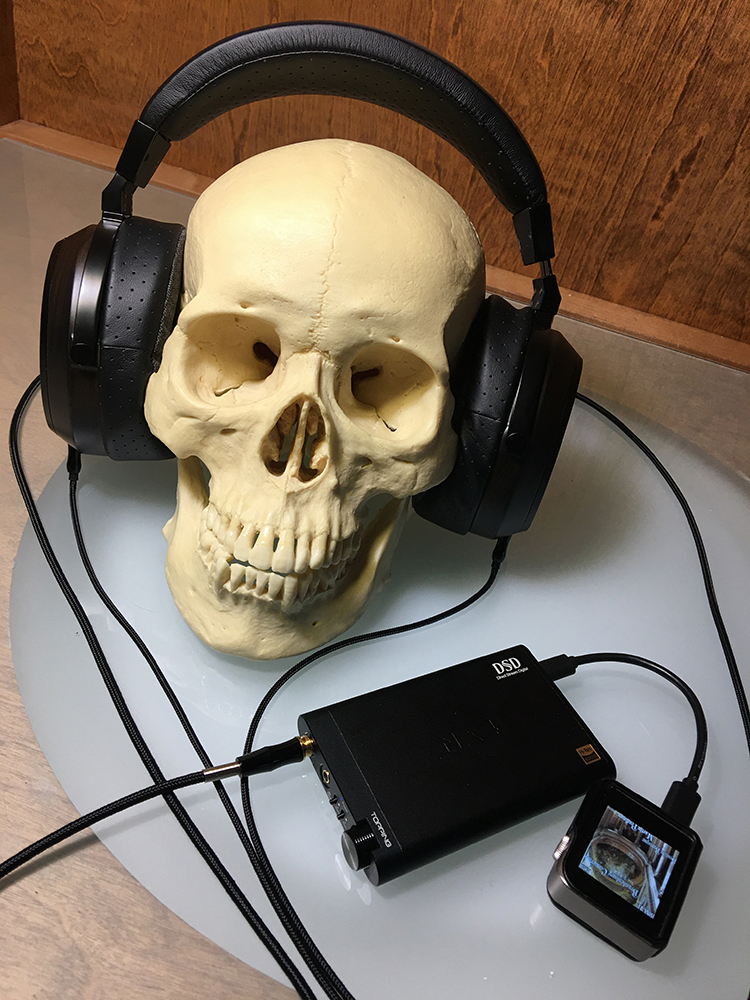
Monolith M570 with Shanling DAP and Topping DAC/Amp
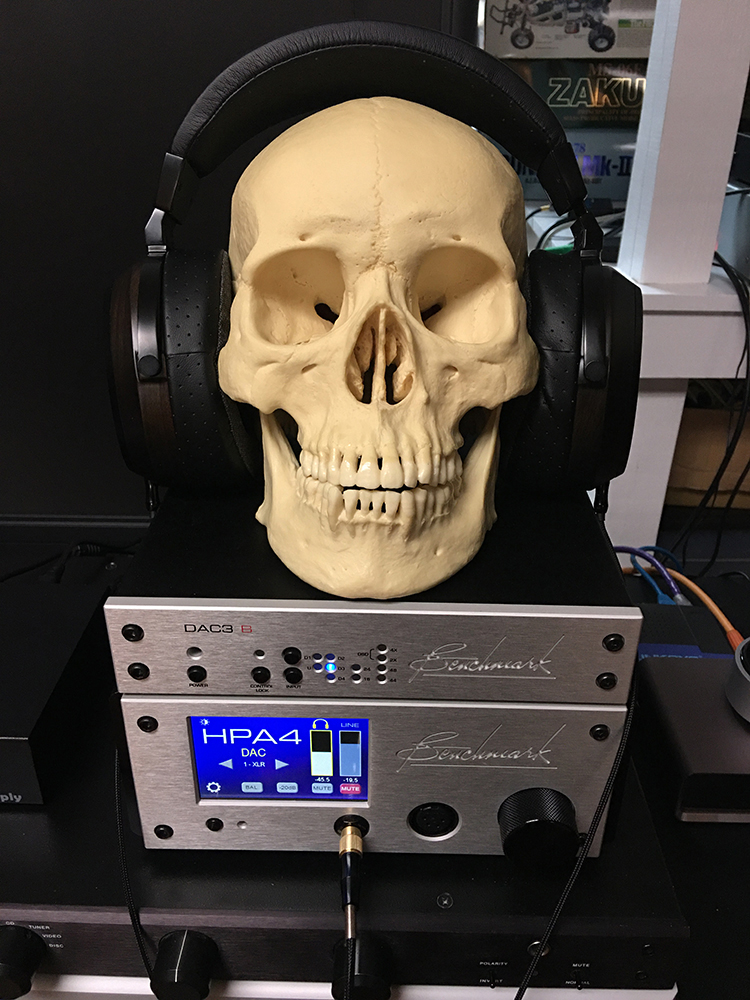
Monolith M570 with Benchmark Media stack
For this review, the Monoprice Monolith M570 Planar headphones were primarily paired with my iPhone 6S Plus using the Onkyo HD Player app, a Shanling M0 DAP and the Topping NX4 DSD portable DAC/AMP for portable use. For home use, I alternated between the OPPO HA-1 DAC/Amp and the Benchmark Media Systems HPA4/DAC3B stack.
From a comfort standpoint, I think Monoprice has a winner on their hands here. The weight of the Monolith M570 may be a little more of an issue for those of slighter frame but I found them to be very plush and comfy seated on my generous melon. I wore them over several multi-hour, late-night drawing stints at my computer and drawing desk and I did not find myself getting fatigued or sore in any way when I would get up for a stretch. I also found that the shape of the headband was very helpful at preventing the headphones from sliding forward or back on my head. Once the M570s were on, they stayed put. As I mentioned earlier, the overall clamping force was modest and perfectly comfortable for a long listening session.
Moving on to sound quality, the Monolith M570 certainly had that sense of spaciousness that one comes to expect from open-back headphones. Everything sounded bigger, a little more diffuse and this generally worked well with most kinds of music that I listened to. A couple of things that I didn’t expect however were first, the M570 has a good, solid handling of the bottom octaves of the frequency range (a number of inexpensive open-backs don’t) and second, while the treble response was smooth to my ears, things like upper register female vocal and horns did not come off as overly soft (another thing inexpensive open-backs can do). There is a nice sense of balance in the overall character of these headphones. Nothing stands out as jarring or out of place making them supremely easy to listen to. I think whoever did the final tuning for these headphones found a pretty good sweet spot in this price bracket that will suit a wide variety of musical tastes. Unless you are looking for ultimate neutrality or are a detail freak in your listening preferences, the M570 should suit well.
Listening on the go with these headphones is fine. I wouldn’t wear them on a bus or a subway where other people will be able to make out your secret and strange addiction to Ethel Merman tunes, but wearing them while walking the dogs or other such activities is fine. You will get some intrusion of outside noise so just turn up the volume to compensate. Speaking of volume, I opted to use my Topping NX4 DSD DAC/AMP with my iPhone or Shanling DAP when going mobile with the M570. I felt the two meshed really well together giving me a bit more detail and clarity over the phone or DAP alone along with all the drive I could ask for with these headphones. And of course, the bass just got better with more power on tap.
For the longest time, my daily driver headphones were the OPPO PM-3, another planar headphone but a closed-back iteration. At a price of $100.00 more expensive than the Monoliths when the PM-3 first premiered, I’ve always enjoyed their character and comparing them to the M570 was an interesting experience. Being closed back headphones they had a tighter and more focused presentation over the Monoliths with their imaging being more squarely in my head. They also sounded a bit leaner in the midrange but have a bit more presence in the treble with cymbals and horns than do the M570. Bass response from the PM-3 was also a little more reserved, the M570 having just a bit more oomph at the bottom end without getting overly saturated. Between the two I found myself reaching for the M570 more often over my trusty old OPPOs. Their combination of smooth spacious sound with enough bass and detail emphasis in just the right areas kept me coming back, in most cases, over the leaner and focused sounding OPPOs. The M570H made for consistently comfortable and satisfying listen and seems a legit value for their $299.00 asking price.
Secrets Sponsor
Some of my favorite playlist tracks to listen to with the Monoprice Monolith M570 were:

Rollin’ And Tumblin’, Concord Records, FLAC 16/44.1.
The Monolith M570 does wonders with this highly compressed Blues/Rock number. Billy Gibbons guitar was properly distorted and “crunchy” sounding with the additional spaciousness of the open-back design providing some extra bloom to the guitar goodness without softening the edge of its sound.
There is a heavy electric bass line rumbling through this song and the Monoliths give it great depth and dimension without it becoming overly dominant. These headphones also balanced Gibbons’ scratchy and at times mumbling lyrics well with the music. When I switched to the OPPO PM-3, Gibbons’ voice was squarely between my eyes and it sounded sharper and stuck out more. It was certainly more grating with the PM-3 where the Monoliths kept it sounding smoother but with enough presence and detail to clearly hear what he was singing. For all I know, the overall flatter presentation from the OPPOs may have been more accurate to the recording but the M570 made it much more fun to listen to.

No 4 Allegro, Telarc Records, FLAC 16/44.1.
Again, the additional spaciousness afforded by these headphones’ “pluses” the overall experience of this Baroque orchestra but not in an artificial or processed manner. The spaciousness feels natural, giving you the sensation that you are listening to the strings, cello, harpsichord and flute in more of a live venue.
The OPPO PM-3 definitely gives a more two-dimensional rendering of the ensemble with the instruments seeming to lack a little body to their sound, but where they excel is in the presentation of the last little details. The PM-3 gives such subtleties as the sheen of the strings and the crispness to the notes of the harpsichords more prominence, where they are a little more subdued on the Monoliths. Don’t get me wrong though, those finer details were still there on the M570, just less in your face. Still, I would pick the Monoliths for the overall listening experience with this kind of music. The smoothness and ease they exhibited here with the more polite top end was a more appealing choice for me.
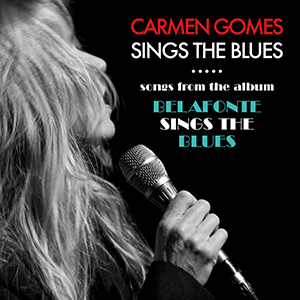
A Fool For You, NativeDSD, DSD256.
A live in-studio recording with an audience makes for an interesting dynamic between singer, audience, and quartet. Again, the spaciousness of the M570’s character pays dividends for the listening experience providing additional ambiance to the performance.
Miss Gomes’ vocals are smooth and melodic but with a nice tone and weight to them that the M570 does not allow to sound chesty. They are in good overall balance with the rest of her backing quartet. The double bass sounded really thick and meaty with good sounding string detail coming from the plucks. Kick drum had a great impact to it while the brushes on the cymbals and drum skins had just enough sheen to them to complete the sonic picture nicely. Switching back to the OPPO PM-3, I suddenly became hyper-aware of the singer’s vocals, they were noticeably more forward. The aforementioned drum details were crisper and more obvious while the bass was less prominent and a little weak.
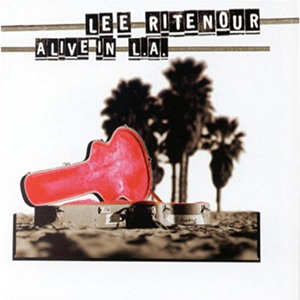
4 on 6, GRP Records, FLAC 16/44.1.
An extended and high-energy interpretation of the Wes Montgomery classic. Ritenour’s version is like a coiled spring, repeatedly compressing and releasing energy at a frenetic rhythm. Lee’s guitar playing here is fast-paced but sounds liquid-smooth with a deep, resonant tone.
This seems to be right in the M570’s wheelhouse as the instrument just sounded big and enveloping without losing any of that lovely ringing string tone. Electric bass lines and kick drum have gobs of punch and impact to them but without sounding overbaked through the M570’s tuning. There is a prolonged soloing section in the middle of the track where the drums and saxophone are sparring with each other, trading quick jabs back and forth. The M570’s planar drivers keep pace with the lightning-quick intensity and frequency changes, with everything remaining clear, snappy and easy to follow. Imaging was equally good here with the panning drum rolls sounding fantastic going back and forth in front of me. This track fared decently when listened to on the OPPO PM-3, but as with the other musical examples I cited, things sounded a little smaller and flatter with less bass by comparison.
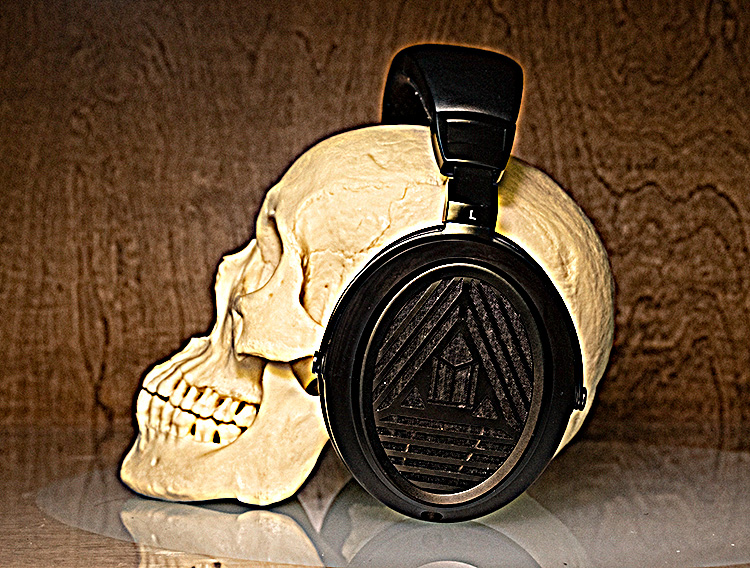
“Skulllz”
The MONOPRICE MONOLITH M570 HEADPHONES are a smooth and engaging listen with most types of music. They are a great value for the money.
- Smooth, spacious sound with an appealing overall balance.
- Great, solid bass reproduction.
- Polite but engaging treble.
- Extremely comfortable.
- Solid build.
- Different staining that makes the wood grain on the earcups noticeable.
- A balanced cable plug option.
In case you hadn’t figured, I thoroughly enjoyed my time with the Monoprice Monolith M570 headphones. Their spacious and smooth sonic character melded with an above average (for inexpensive open-back cans) level of bass reproduction and some judicious tuning in the upper vocal and lower treble range make these a great go-to set of headphones for a wide variety of music. They quickly become an easy and enjoyable listening partner. Unless you are someone who is looking for a more neutral or extremely resolving set of headphones, I think these will find favor with a lot of people who are looking in this price range. While slightly heavy they are well built and exceedingly comfortable for long stretches of time. I recommend using an amplifier to get the best performance out of the M570 when on the go. They need just a bit more juice than what most phones or small DAPs can provide so it shouldn’t be too hard to find something suitable without breaking the bank. I know it’s been a while now, but for $299.00 it still amazes me that one can get planar magnetic headphones at that price. If you are in the market for some new cans and these fall within your budget, I strongly suggest that you seek out the Monolith M570 for a listen. Highly recommended.


